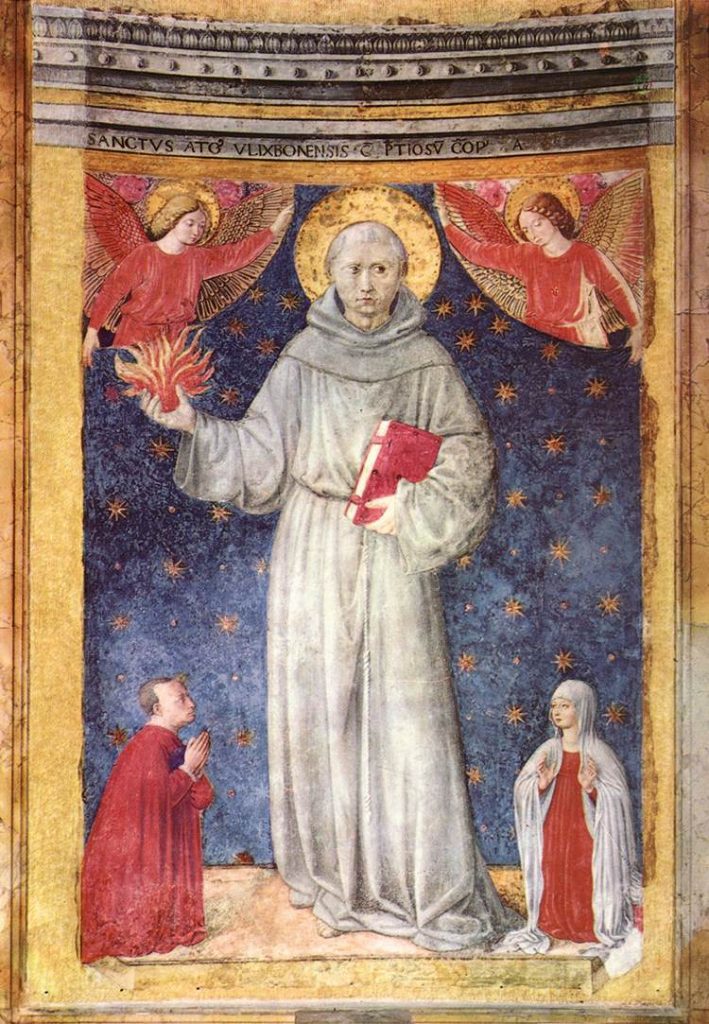St. Anthony of Padua is surely among the best-loved of the saints in glory. He is the patron of those who search for lost objects. Artists portray him in his Franciscan habit, holding the baby Jesus.
We all call upon St. Anthony when we’re looking for something. But I invoke him today for a different reason. I recall him to you because he was a biblical scholar par excellence, with so prodigious a memory that he has been called “The Concordance.”
St. Anthony was a bit like the book you’re holding in your hands. He was able to retrieve passages from the Bible at a moment’s notice. Name a theme, and he could draw relevant Scriptures from many points in the biblical canon.
In fact, he was fond of the word “concordance” (in its Latin equivalents), though he didn’t use it to describe a book. He used it to describe a reality: the unity of the two testaments, the unity of the whole Bible.
“The God of the New Testament is one and the same as the God of the Old and is indeed Jesus Christ the Son of God. We may apply to him the words of Isaiah: “I myself that spoke, behold, I am here [Isaiah 52.6]. I spoke to the fathers in the prophets; I am here in the truth of the Incarnation. That is the justification for seeking to concord the Scriptures of both Testaments.”
St. Anthony was on to something here. If the Bible were not the work of a single principal author, God, then why should we care to compare the Hebrew verbs of the Book of Genesis with their Greek equivalents in Revelation?
Our medieval Paduan was merely passing on a timeless truth of the faith. Almost a millennium before, the Fathers of the Egyptian desert had applied themselves to the same task, and for all the same reasons. They would chant all the psalms every day; and, in those centuries when few people could own books, they would gather for daily and weekly “synaxes” (“congregation”) to hear the word of God and commit it to memory. In fourth-century Egypt, St. Sisoes the Great was asked the secret to his wisdom and holiness. He said, “What shall I say to you? I read the New Testament, and I turn to the Old?”
What those saints meant by concordance is “the juxtaposition and correlation of scriptural passages, so that they illuminate and interpret one another.”
We live in a day when search engines can power through the Bible in seconds — doing the work of many monks, and even many monasteries.
These are great times indeed for biblical studies. But, unlike former periods of renewal, ours is not confined by the walls of the abbeys or by the towers of the universities. Catholic Bible studies, websites, and apps give us a kind of spiritual technology — interpretive elevators, to borrow a metaphor from St. Thérèse of Lisieux.
May we all rise to the occasion, using tools like this concordance to become “concordances” ourselves, like St. Anthony and so many of our ancestors in the faith.

